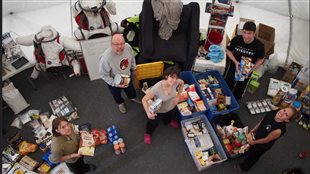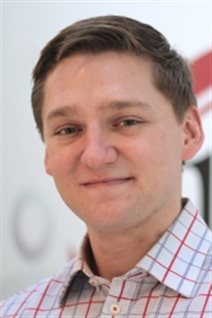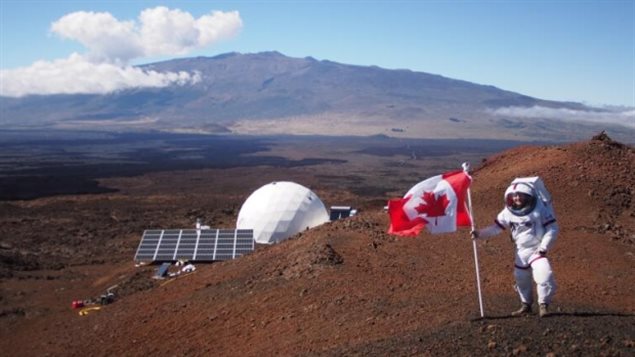It’s called “Hi-SEAS” but it’s all about space, in fact, a mission to Mars.

Hi-SEAS stands for Hawaii Space Exploration and Analog and Simulation, and mission-2 has just ended.
The idea is to select an area on earth that bears physical similarities to the surface on Mars, in this case a slope on the Hawaiin Mauna Loa volcano. Other NASA analog sites are in northern Canada, Utah (USA), and Australia.
Canadian PhD candidate Ross Lockwood was among the six scientist volunteers on mission-2 who spent a period of four months in and around the the “space colony”
However whenever they venture outside (an EVA- extra vehicular activity), they must wear spacesuits to again simulate the necessity of space suits outside the habitat on Mars..
Each of the scientists perform and analyze experiments related to their special fields, but any communications with colleagues or the command centre on “Earth” go through a 20 minute delay which simulates the time lag they would experience with Mars-Earth communications, although contact with the outside world was limited.

Their mission, Hi-SEAS 2, ended on Friday, when the group ventured outside without space suits to experience fresh air, the wind and sun on their skin, and natural sounds for the first time in four months.
Lockwood, originally from British Columbia and now a PhD candidate in Edmonton Alberta, says it was a bit overwhelming to the senses at first.
Part of the experience is for NASA to determine how people get along in cramped quarters for extended periods of time, in addition to testing of equipment and procedures. They must live with each other, work together, solve problems together, resolve conflicts, and all coexist for the success of the mission.
Lockwood said the experience was “challenging” at times, adding the confinement added to the psychological stress and crew cohesion issues. He also said he would be glad to eat something other than dehydrated food, which he described as “inconsistent”
NASA’s long-term goal is to send an exploration crew to Mars and eventually establish a colony there.
Another Canadian, robotics engineer Simon Engler of the University of Calgary was on the Hi-SEAS-1 mission.
NASA is now accepting applications for Hi SEAS-3, which unlike previous missions, will be for a period of eight months. Application deadline is September 8.
** From the Hi-SEAS website : ** On an actual planetary surface mission, astronauts would be engaged in a broad variety of research, exploration, engineering, and outreach activities, as well as exercising and carrying out routine housekeeping chores. Our crew members have to be busy in the same way astronauts are busy, so that they have realistic schedules and time limitations. Also, we are eager to support research that will help advance the human exploration of space. For these reasons, we invite external research projects for the crew to carry out.
Youtube video (6:40) of mission 2 scientists explaining their research







For reasons beyond our control, and for an undetermined period of time, our comment section is now closed. However, our social networks remain open to your contributions.